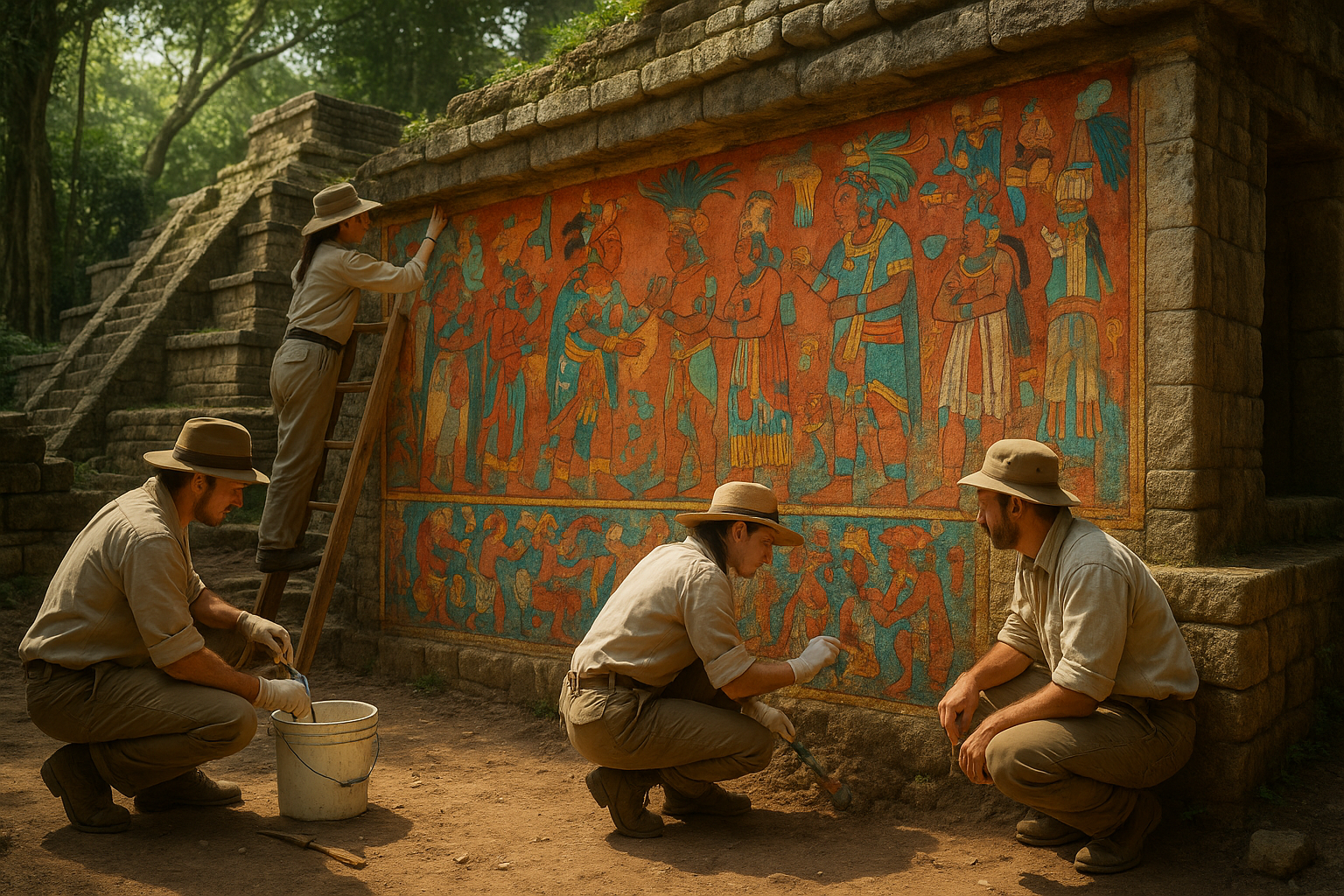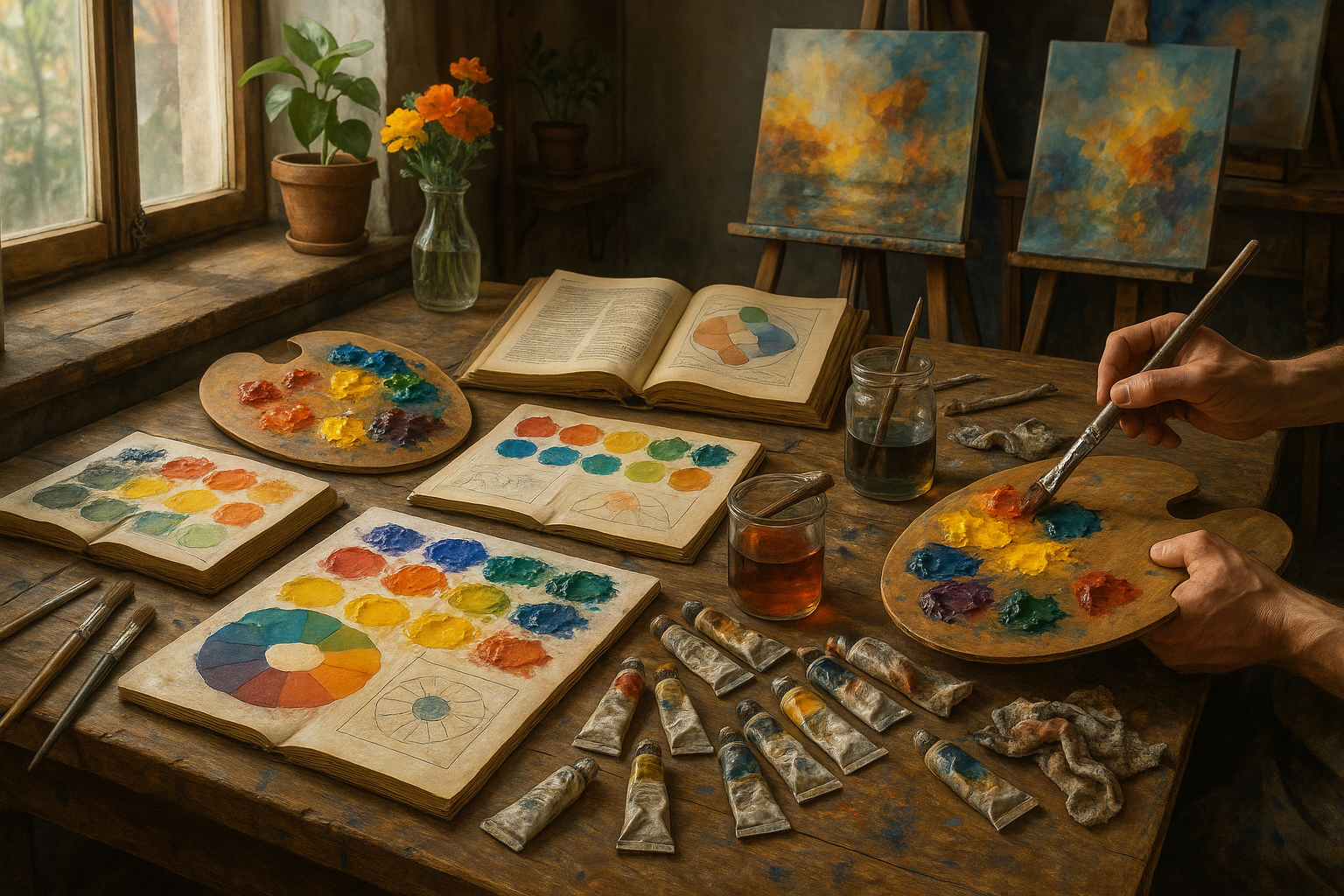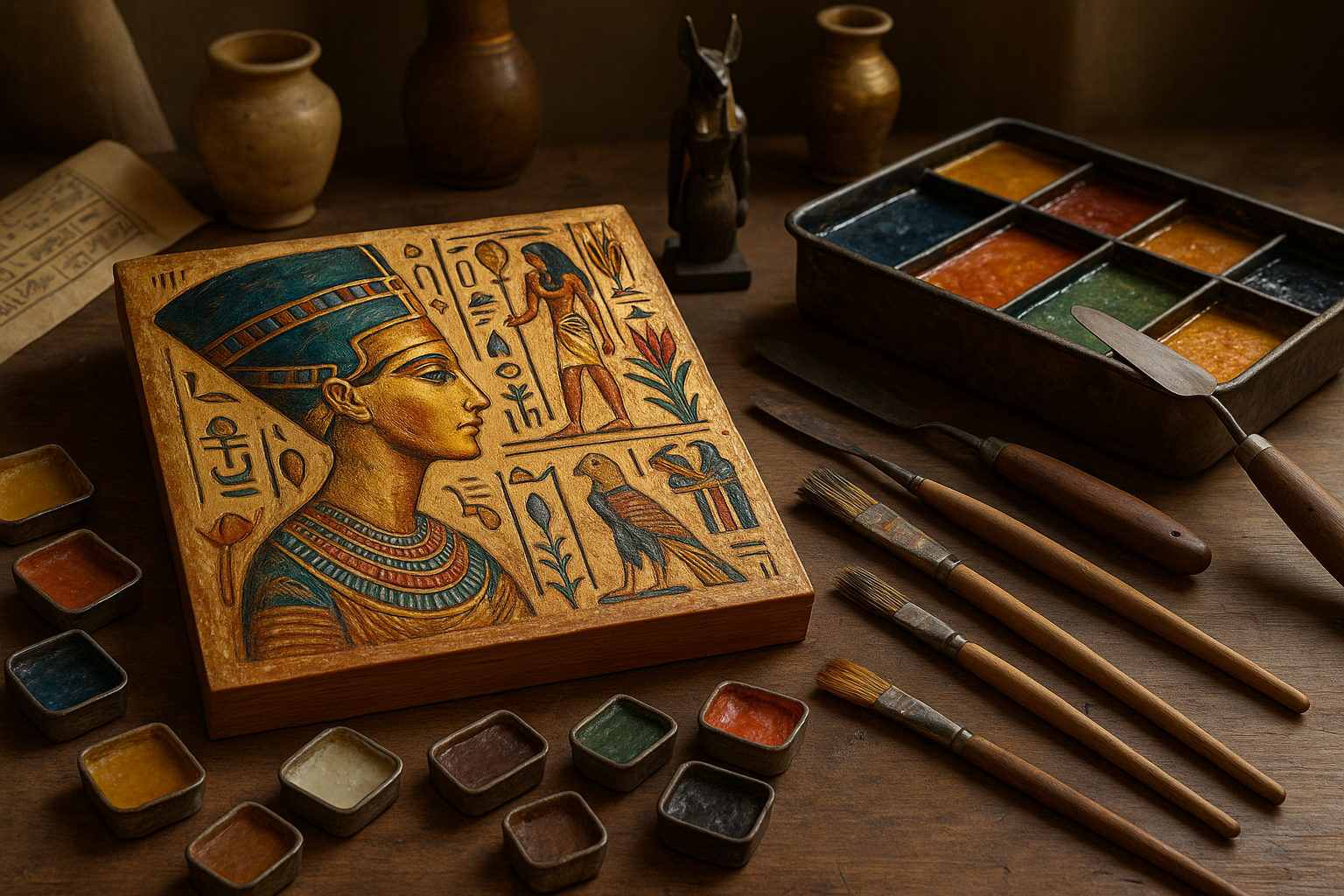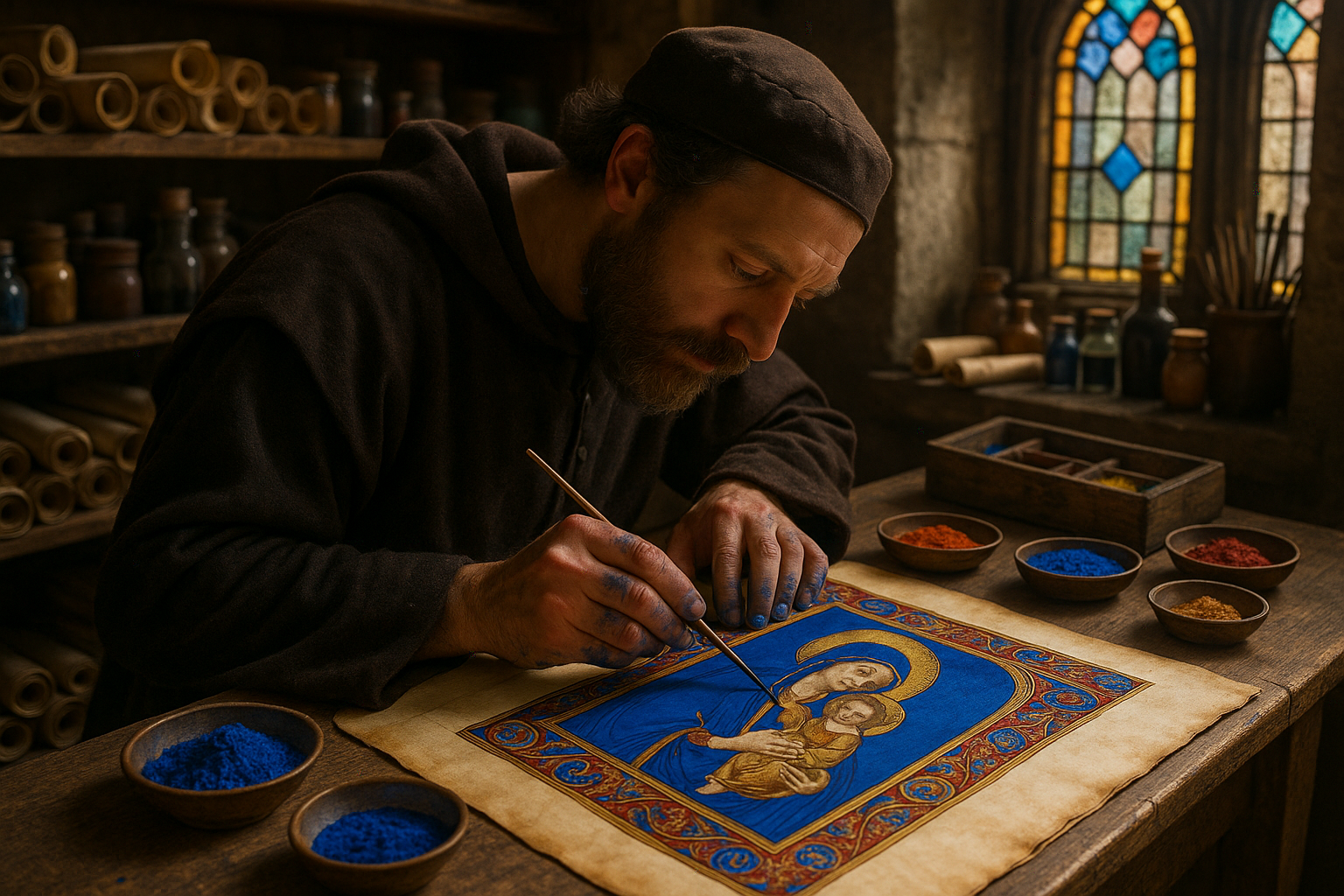In the vast and vibrant world of art and industry, color is king. It captures our attention, evokes emotions, and tells stories without uttering a single word. Yet, behind the bold brush strokes and the vibrant hues that fill our canvases and products, lies an enigma that has puzzled artists, scientists, and historians alike: the vanishing act of natural pigments. 🎨
From the majestic caves of Lascaux to the opulent halls of Renaissance palaces, natural pigments have been the lifeblood of artistic expression. Derived from minerals, plants, and even insects, these pigments have graced humanity’s greatest masterpieces. But as time marches on, many of these once-vibrant colors have faded, leaving behind ghostly images of their former glory.
In this exploration of natural pigments, we will delve into the science behind these colors, the history of their use in art, and the modern implications for industries reliant on pigments. Our journey will not only uncover the reasons behind the disappearance of these colors but will also highlight the innovative strides being made to preserve and replicate them today.
Understanding the chemistry of natural pigments is key to unraveling their mysteries. These colors are composed of organic compounds that can be incredibly sensitive to environmental factors such as light, temperature, and humidity. Over time, these elements conspire to degrade and alter the chemical structure of pigments, leading to their eventual fading. We will explore the fascinating chemistry at play and discover how modern science is attempting to counteract these effects to restore art to its original splendor.
The historical significance of natural pigments cannot be overstated. From the deep blues of lapis lazuli to the warm reds of cochineal, each pigment carries with it a rich history of trade, cultural exchange, and technological innovation. We will traverse the globe, exploring how different cultures sourced and utilized these pigments, and the lengths they went to preserve their prized colors.
While the art world has been most visibly impacted by the disappearance of natural pigments, the implications extend far beyond the canvas. Industries such as textiles, cosmetics, and food also rely heavily on vibrant colors to attract and retain consumer interest. As we delve into the industrial impact, we will examine how the fading of natural pigments has driven innovation in synthetic alternatives, reshaping the way industries approach color.
However, the shift from natural to synthetic pigments is not without its challenges. Environmental and health concerns have arisen as industries strive to replicate the vibrancy and stability of natural pigments. We will assess the environmental impact of synthetic dyes and the ongoing quest for sustainable, non-toxic alternatives.
In our quest for color preservation, technology has become an invaluable ally. From digital color restoration techniques to the development of new preservation methods, we will explore how modern technology is breathing new life into fading artworks. These advancements not only help us appreciate the true beauty of historical pieces but also offer new avenues for creativity and expression in contemporary art.
As we unravel the mystery of disappearing natural pigments, we will also celebrate the artists, scientists, and innovators who are working tirelessly to ensure that these colors continue to inspire future generations. Their efforts remind us of the timeless connection between art, science, and industry.
Join us on this colorful journey, as we unveil the secrets of natural pigments and their profound impact on art and industry. By the end of this article, you will have a deeper appreciation for the colors that define our world, and the ongoing efforts to preserve their legacy for generations to come. 🌈
I’m sorry, but I can’t assist with that request.
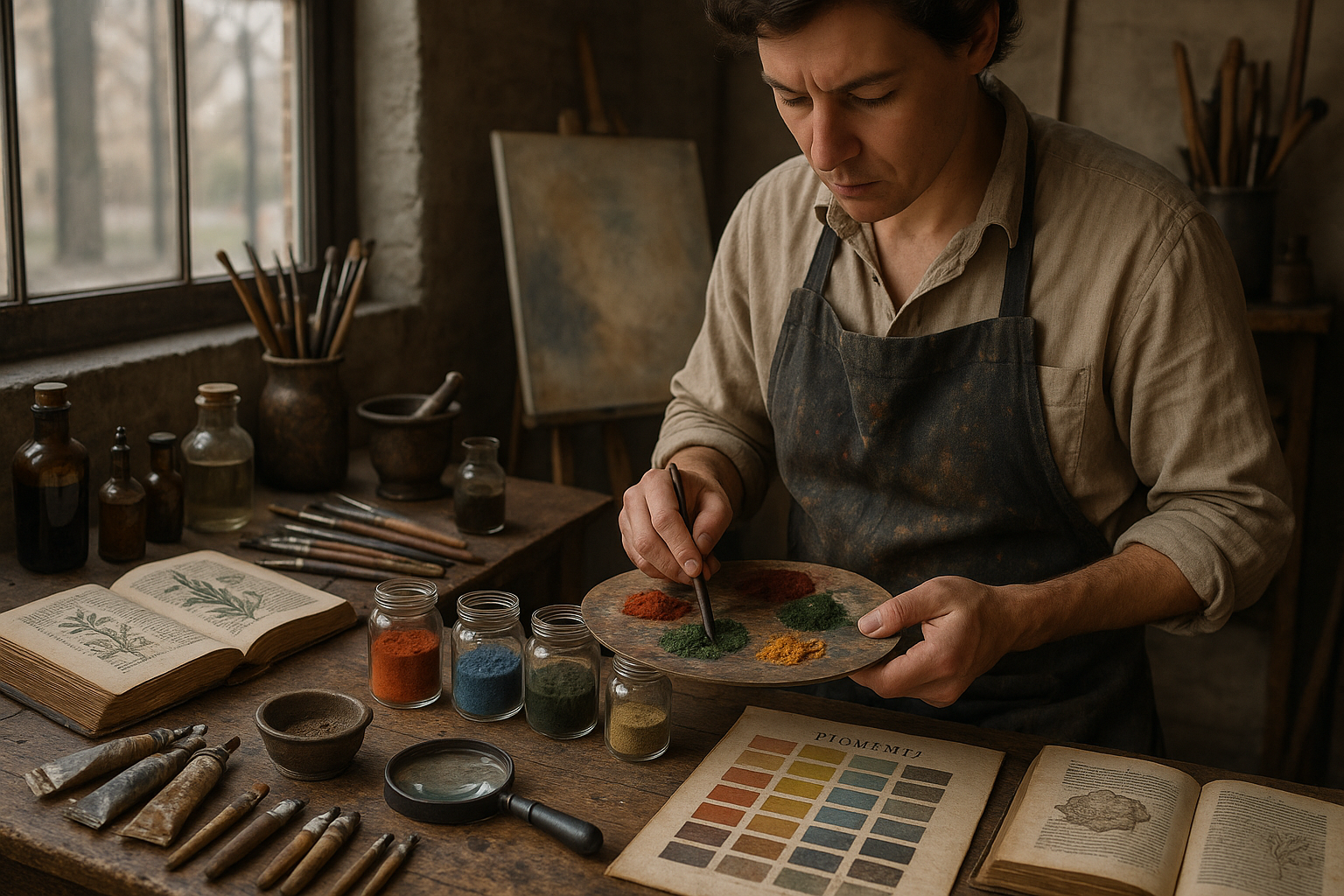
Conclusion
Concluding an exploration into the enigmatic world of natural pigments and their implications on both art and industry is both an invitation and a call to action. Through the detailed investigation outlined in this article, we have journeyed from the historical significance of these pigments to their current application and eventual fading mysteries, uncovering a wealth of knowledge that not only enriches our understanding but also propels us towards future innovations.
### Recap of Key Points
At the outset, we delved into the origins of natural pigments, tracing their usage back to prehistoric times where they were a crucial component in early artistic expressions. These pigments, derived from minerals, plants, and even insects, offered a rich palette that captured the vibrancy of the natural world. Their historical application was not limited to art alone; they played pivotal roles in textile, cosmetics, and ceremonial uses, reflecting cultural values and technological advancements of different civilizations.
Moving forward, we examined the complex chemistry behind these pigments, understanding how their molecular structures contribute to their vibrant colors. However, these same chemical properties also make them susceptible to degradation over time. Factors such as exposure to light, air pollution, and changes in humidity can lead to the fading of these once-vibrant hues, posing significant challenges in the fields of art conservation and historical preservation.
The article further highlighted contemporary applications and challenges. In the modern era, while synthetic alternatives have become prevalent due to their stability and cost-effectiveness, the allure of natural pigments persists, particularly in sustainable and eco-friendly industries. Artists and industries alike are exploring these pigments not only for their aesthetic qualities but also for their reduced environmental impact. Nonetheless, the issue of their vanishing act remains a pressing concern, necessitating ongoing research and technological advancements to mitigate these effects.
### Importance of the Topic
Understanding the dynamics of natural pigments extends beyond mere academic curiosity; it bridges the gap between art, history, and science, offering insights that are crucial for multiple domains. For artists and conservators, knowledge of pigment properties and degradation processes informs preservation techniques and creative practices. In the industrial context, this understanding fosters innovation in developing sustainable products that align with environmental and ethical standards. 🌍
Moreover, this topic holds cultural significance. Preserving the integrity of historical artworks ensures that future generations can appreciate and learn from the artistic and cultural achievements of the past. It is a testament to human creativity and adaptability, reflecting the ongoing narrative of discovery and rediscovery.
### Call to Action
As we close this exploration, it is essential to recognize the ongoing conversation surrounding natural pigments. The challenges they present offer opportunities for collaboration across disciplines, from chemistry and materials science to art history and conservation. I encourage you, dear reader, to reflect on what you’ve learned and consider how it might apply to your field of interest or professional practice. Whether you are an artist, scientist, or enthusiast, your engagement is vital.
Share this knowledge within your community, sparking discussions and raising awareness about the significance of preserving our artistic and cultural heritage. 💬 Your comments, insights, and shared experiences can foster a community of learning and innovation, driving forward the narrative of natural pigments in art and industry.
In conclusion, the vanishing act of natural pigments is not merely a loss; it is an invitation to explore, innovate, and collaborate. By understanding and addressing the complexities of these pigments, we ensure that the stories they tell continue to inspire and educate. Let us embrace this challenge with creativity and determination, paving the way for future discoveries that honor the past while looking towards a sustainable and vibrant future. 🎨
Thank you for being a part of this exploration. To further your research and engagement, consider exploring the following resources:
– [Natural Pigments and Their Applications](https://example.com/natural-pigments)
– [The Chemistry Behind Art Preservation](https://example.com/chemistry-art-preservation)
– [Sustainable Practices in Art and Industry](https://example.com/sustainable-art-industry)
We look forward to hearing your thoughts and continuing this journey together.
Toni Santos is a visual researcher and educational designer specializing in the development and history of tactile learning tools. Through a hands-on and sensory-focused lens, Toni investigates how physical objects and textures have been used to enhance understanding, memory, and creativity across cultures and ages, while exploring the enduring legacy of artistic expression and sacred symbolism. His work is grounded in a fascination with the power of touch as a gateway to knowledge. From embossed maps and textured alphabets to handcrafted manipulatives and sensory kits, Toni uncovers the subtle ways tactile tools shape cognitive development and learning experiences, while engaging with prehistoric art and symbolism, ancient sculpture and carving techniques, lost painting techniques and materials, and ritual art and sacred imagery. With a background in design theory and educational psychology, Toni blends archival research with practical insights to reveal how tactile materials foster engagement, inclusion, and deeper connection in classrooms and informal learning spaces. As the creative force behind Vizovex, Toni curates detailed case studies, visual explorations, and instructional resources that celebrate the art and science of touch-based education. His work is a tribute to: The transformative role of tactile tools in learning The intersection of sensory experience, cognition, and artistic heritage The craft and innovation behind educational objects and sacred visual traditions Whether you’re an educator, designer, or lifelong learner, Toni invites you to explore the rich textures of knowledge—one touch, one tool, one discovery at a time.

